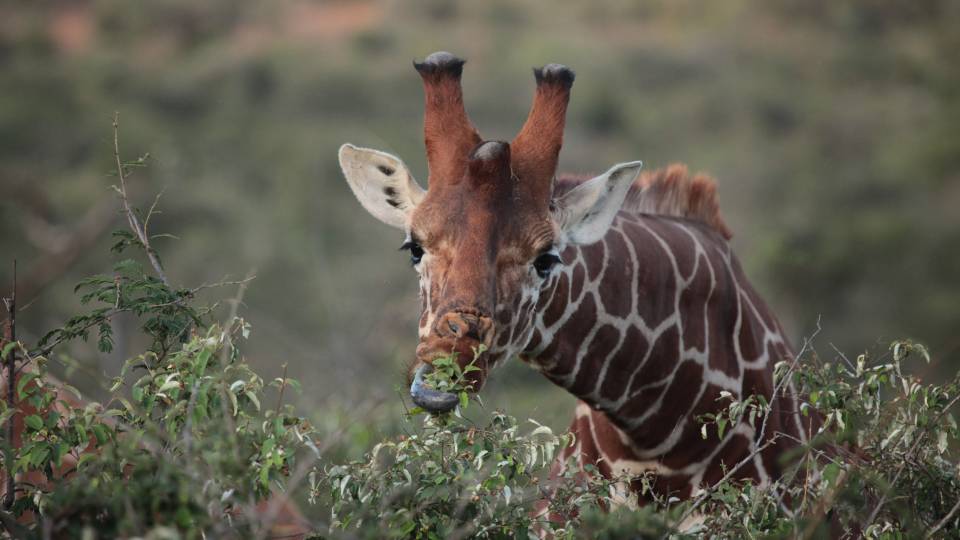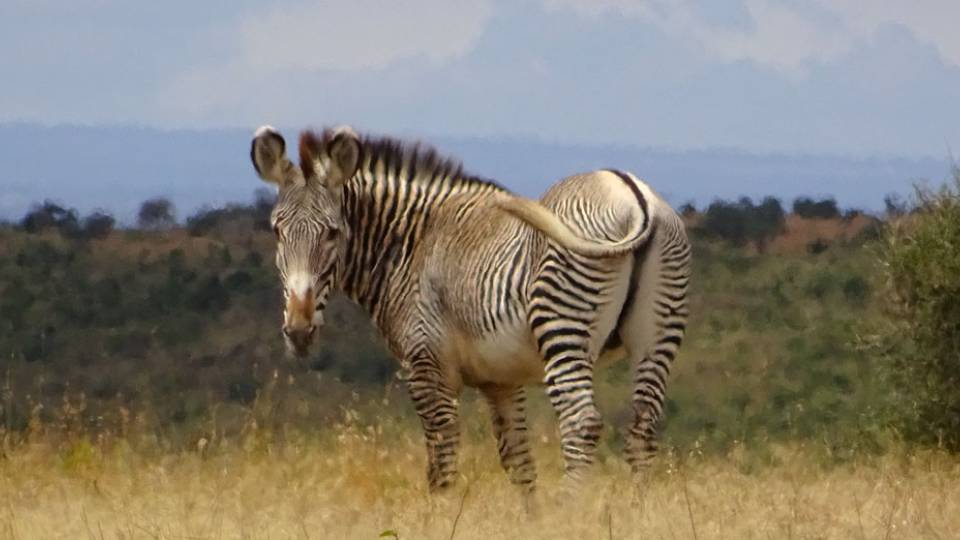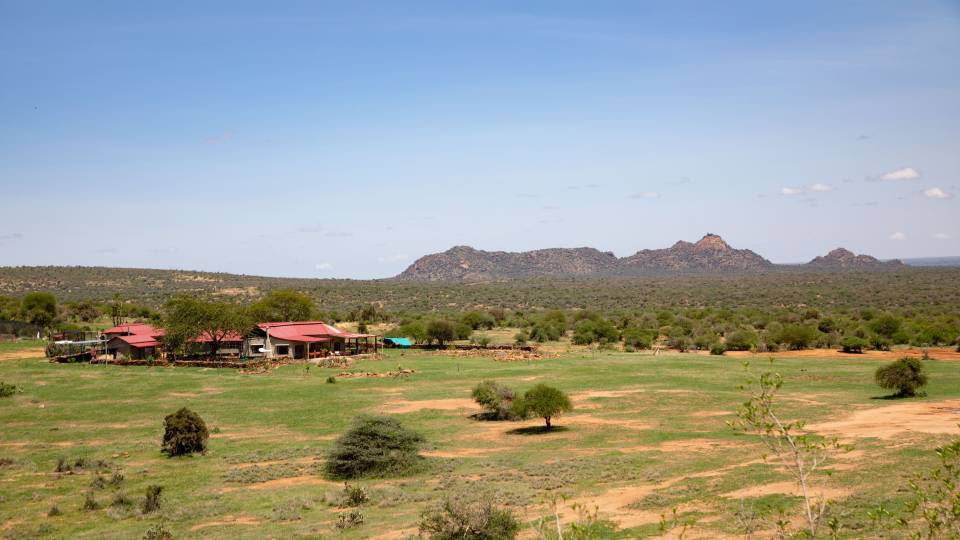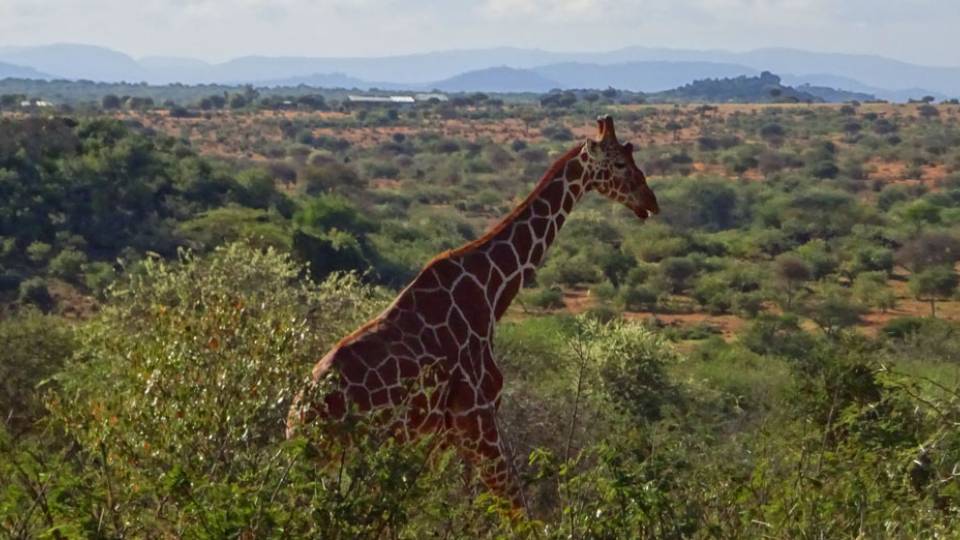Africa's abundant and iconic wildlife provides seemingly endless wonderment. For ecologists, that has extended to the persistent riddle of how the African savanna's diverse population of herbivores — from elephants and zebras to impalas and buffalo — survive on what appears to be limited food sources: mostly grasses or mostly trees.
Earlier this year, however, Princeton University research published as the cover story for the Proceedings of the National Academy of Sciences (PNAS) reframed the question to this ecological puzzler, and the answer is already changing how people think about ecosystems and species conservation.
The researchers analyzed plant remains in the dung of various large herbivores inhabiting the savannas of Kenya using a technique known as "DNA metabarcoding," which identifies the DNA of a mix of species. The researchers found that the animals they studied in fact have unique diets. While the animals eat many of the same plants, they do not eat the same amount of each plant type. Each species instead consumes a characteristic suite of different plant species in different proportions, so that no two species are competing strongly for the same food sources. Known as "dietary niche partitioning," this process allows multiple herbivore species to coexist in the same habitat without strong competition.
"Leaders in ecology and conservation are excited about this new way of solving an old problem," said the paper's first author, Tyler Kartzinel, a Princeton postdoctoral research fellow and NatureNet Science Fellow affiliated with Princeton University and The Nature Conservancy.
"Conservationists in Kenya think that knowing more about what wildlife eat will help them make better decisions to protect endangered species and reduce human-wildlife conflict," said Kartzinel, who is based in the laboratory of senior author Robert Pringle, an assistant professor in Princeton's Department of Ecology and Evolutionary Biology. "Those decisions rest on knowing when animals are struggling to find food, which plants and habitats to protect, and whether livestock may be competing with wildlife for food."

Senior author Robert Pringle (left), an assistant professor in Princeton's Department of Ecology and Evolutionary Biology, and first author Tyler Kartzinel (right), a postdoctoral research fellow in Pringle's laboratory, collected and entered into a database the DNA of 400 plant species that grow on the African savanna. They matched their database to plant DNA samples taken from the droppings of savanna herbivores to determine the plant species the animals ate. (Photo by Joshua Daskin, Department of Ecology and Evolutionary Biology)
The coexistence problem
The researchers studied six wild species: elephants; buffalo; the endangered Grevy's zebra; plains zebras; impalas; and dik-diks, which are antelopes the size of a small dog. They also analyzed the diet of cattle, which commonly graze alongside wildlife in Africa; perceived competition with cattle is a common flashpoint between humans and wildlife. This fieldwork was conducted across a 150-square-kilometer (58-square-mile) tract of savanna at the Mpala Research Centre in Kenya, a multi-institutional research preserve with which Princeton has been long involved.
The animation below illustrates how having so many animals compete for the same food resource on the savanna should result in it being depleted. Elephants would consume a portion of the available forage (green squares), followed by buffalo, Grevy's zebra and cattle. By the time impala arrive, the plants are depleted (brown squares) and the animals starve. Yet, this does not happen in actuality.

(Animation by Kyle McKernan, Office of Communications)
The prevailing theory of how these animals coexist on the African savanna has been that different species have evolved to eat different parts of the same types of plants, Kartzinel and Pringle explained. For instance, some animals eat the succulent top of a grass blade, while others consume the rougher portion nearer the ground. But ecological models along these lines have overlooked an important dimension of the problem, Pringle said.
"It was seen as a simple system, but characterizing it in that way required a lot of assumptions," Pringle said. "Those approximations and simplifications were not necessarily wrong — in fact, our results confirm some of them — but they did gloss over big chunks of the actual biology. 'Grasses' is a family of organisms that comprises many different species with many different traits. Herbivores were perceiving those differences and ecologists weren't."
Instead of asking how so many animals live on a few plants, the Princeton researchers posed a different question: Exactly which plant species were these animals eating? Surprisingly little was known about that, Pringle said, in part because the data were so difficult to obtain.
"We knew the rough contours of their diets, but a comprehensive list of food plants is amazingly elusive," Pringle said. "These animals are hard to observe from up close, they move over long distances, and the plants they feed on are very small. Plants can be hard to identify to the species level even for an expert botanist with a specimen in hand. Never mind trying to identify a blade of grass in the mouth of a buffalo 50 meters away."

Prevailing theory about how the numerous herbivores of the African savanna coexist holds that different species evolved to eat different parts of the same plants. For instance, some animals such as giraffes (above) eat the leafy tops of trees, while others can only reach shoots that grow closer to the ground. But ecological models along these lines gloss over important nuances in the day-to-day biology of the savanna. (Photo by Robert Pringle, Department of Ecology and Evolutionary Biology)
DNA metabarcoding makes determining the plants a particular animal species eats easier. The technology has only recently become feasible for ecologists to use in the field, Kartzinel said. But the information can be overwhelming — each analysis returns 250 million lines of genetic code. To simplify the fieldwork, the research team first collected the DNA of 400 plant species that grow on the African savanna and entered that information in an online database.
Because much DNA survives the digestive process, the researchers could collect it from plant remains in the droppings of the animals they studied. "We spent a lot of time in Kenya watching animals out of car windows, waiting for them to poop," Pringle said. "When they did, we ran out, grabbed the sample, preserved it, and got it back to the lab." Kartzinel and his colleagues extracted and sequenced the plant DNA from the fecal samples then matched it to the reference database to identify the species eaten by each herbivore.
The researchers found that the animals collectively dined on 110 plant species from 25 families. Representation of the grasses family, Poaceae, ranged from 99 percent of the diet in plains zebras to less than 1 percent of the diet for dik-diks, which most frequently ate from the legume family, Fabacae. Even the two species of zebra, which are closely related and subsisted almost exclusively on grasses, exhibited unique compositions of the type of plants they ate — 30 percent of the plant species in their diets differed in frequency between the two animals' respective droppings.

The researchers found that the animals they studied collectively dine on 110 plant species from 25 families. While the animals eat many of the same plants, such as Indigofera hochstetteri (above), they do not eat the same amount of each plant type. Each species instead consumes different plants in different proportions, which reduces the strength of competition between different herbivores. (Photo by Robert Pringle, Department of Ecology and Evolutionary Biology)
A new diagram of coexistence
The animation below, based on the Princeton researchers' findings, depicts how multiple herbivore species are thus able to feed in the same habitat by favoring different plant species, which are represented by the different colored boxes.

(Animation by Kyle McKernan, Office of Communications)
The researchers plan to add more plants to their DNA database — which is now public — and make it more accessible and user-friendly. Kartzinel envisions a tool that conservationists and farmers in Africa can eventually employ in real time to monitor the plants that wildlife and livestock are eating to determine where the animals can graze together.
"Under certain circumstances, wild herbivores probably aren't competing with one another or livestock for resources, and knowing what those circumstances are matters," Kartzinel said. "Our technique is more than just a new tool — it's an ability to harness and make use of all this information about complexity in nature. We are analyzing thousands of samples from dozens of species from different countries and seasons to reconstruct entire food webs and really figure out how species coexist. We are working with farmers and conservation planners to feed information about what animals eat into real-world decision-making."
Other ecologists also have been enthusiastic about the work and the revelations it could provide about how food webs develop and self-sustain.
According to a commentary in PNAS, the research could help scientists understand — and possibly foresee — species competition and dominance by getting an account of the food resources available to specific animals. The authors, Professor David Tilman and Associate Professor Elizabeth Borer, both of the University of Minnesota's ecology, evolution and behavior department, wrote: "The next-generation sequencing approaches used by [the researchers] may finally allow us to learn, at the level of individual species, how the constraints, trade-offs and feedback effects species experience in food webs interact to determine the diversity, functioning and stability of Earth's most complex, and most threatened, terrestrial ecosystems."
"I think that the community senses the power of this approach to reveal a lot about how natural systems are organized that until now has been invisible," Pringle said. "We can combine this kind of analysis with more conventional field experiments — and with other emerging and rapidly improving technologies such as high-resolution satellite tracking of animals — to forensically piece together a very detailed and precise picture of what these animals' lives are like, and how they coexist. The potential is jaw-dropping — I think we’re going to be able to re-open and solve a lot of cold cases."

This figure shows the extent to which the diets of the seven animals studied contained the DNA of 11 specific plant families, plus a mixture of 14 others with a low presence. The colored lines distinguish a particular animal species' diet. The colored rectangles in the center correspond with a particular plant family, as indicated by the key at lower left. Instead of all species subsisting on grass, the actual grass family, Poaceae (green squares), ranged from making up 99 percent of the diet of plains zebras to less than 1 percent of the diet for dik-diks. (Image by Tyler Kartzinel, Department of Ecology and Evolutionary Biology)
Kartzinel and Pringle worked with, from Princeton, Patricia Chen, a research specialist in the Pringle group who is now a graduate student at Columbia University; Tyler Coverdale, a graduate student in the Pringle group; Daniel Rubenstein, the Class of 1877 Professor of Zoology and professor of ecology and evolutionary biology; and Wei Wang, director of the High Throughput Sequencing and Microarray Facility in the Lewis-Sigler Institute for Integrative Genomics. Co-authors also included David Erickson, W. John Kress and Maria Kuzmina, all of the Smithsonian Institute's Department of Botany.
Kartzinel and Pringle attributed the success of the project to a strong collaborative effort. "Modern science is a team sport," Pringle said. "All the co-authors played a vital role — we interacted and shared ideas, and the science got stronger. We have a concentration of faculty and students from ecology and evolutionary biology working at Mpala, which helps, and we had key contributions from Wei Wang and from our colleagues at the Smithsonian."
Kartzinel noted the importance of natural history museums such as the Smithsonian that serve as repositories for biodiversity information. "One of the most challenging components of this project was assembling all the plant specimens, barcoding them and identifying them. That kind of taxonomic expertise is increasingly rare, which is a problem. We could not have done this without such strong support from our colleagues at the Smithsonian and Kenya's Barcode of Life Consortium [KenBOL]."
The paper, "DNA barcoding illuminates dietary niche partitioning by African large herbivores," was published June 30 by the Proceedings of the National Academy of Sciences. The work was supported by grants from the National Science Foundation (grant no. DEB-1355122); Princeton University; the Princeton Environmental Institute; and the National Geographic Society (grant no. 9291-13).







